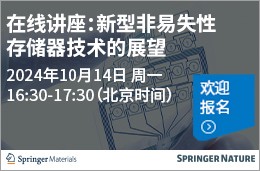Bone Research ( IF 14.3 ) Pub Date : 2018-05-24 , DOI: 10.1038/s41413-018-0019-6 Yujiao Han 1 , Xiuling You 1 , Wenhui Xing 1 , Zhong Zhang 1 , Weiguo Zou 1

|
The skeleton is a dynamic organ that is constantly remodeled. Proteins secreted from bone cells, namely osteoblasts, osteocytes, and osteoclasts exert regulation on osteoblastogenesis, osteclastogenesis, and angiogenesis in a paracrine manner. Osteoblasts secrete a range of different molecules including RANKL/OPG, M-CSF, SEMA3A, WNT5A, and WNT16 that regulate osteoclastogenesis. Osteoblasts also produce VEGFA that stimulates osteoblastogenesis and angiogenesis. Osteocytes produce sclerostin (SOST) that inhibits osteoblast differentiation and promotes osteoclast differentiation. Osteoclasts secrete factors including BMP6, CTHRC1, EFNB2, S1P, WNT10B, SEMA4D, and CT-1 that act on osteoblasts and osteocytes, and thereby influenceaA osteogenesis. Osteoclast precursors produce the angiogenic factor PDGF-BB to promote the formation of Type H vessels, which then stimulate osteoblastogenesis. Besides, the evidences over the past decades show that at least three hormones or “osteokines” from bone cells have endocrine functions. FGF23 is produced by osteoblasts and osteocytes and can regulate phosphate metabolism. Osteocalcin (OCN) secreted by osteoblasts regulates systemic glucose and energy metabolism, reproduction, and cognition. Lipocalin-2 (LCN2) is secreted by osteoblasts and can influence energy metabolism by suppressing appetite in the brain. We review the recent progresses in the paracrine and endocrine functions of the secretory proteins of osteoblasts, osteocytes, and osteoclasts, revealing connections of the skeleton with other tissues and providing added insights into the pathogenesis of degenerative diseases affecting multiple organs and the drug discovery process.
中文翻译:

骨的旁分泌和内分泌作用——成骨细胞、骨细胞和破骨细胞分泌蛋白的功能
骨骼是一个不断重塑的动态器官。骨细胞(即成骨细胞、骨细胞和破骨细胞)分泌的蛋白质以旁分泌方式对成骨细胞生成、破骨细胞生成和血管生成发挥调节作用。成骨细胞分泌一系列不同的分子,包括调节破骨细胞生成的 RANKL/OPG、M-CSF、SEMA3A、WNT5A 和 WNT16。成骨细胞还产生刺激成骨细胞生成和血管生成的 VEGFA。骨细胞产生硬化素(SOST),抑制成骨细胞分化并促进破骨细胞分化。破骨细胞分泌的因子包括BMP6、CTHRC1、EFNB2、S1P、WNT10B、SEMA4D和CT-1,作用于成骨细胞和骨细胞,从而影响成骨。破骨细胞前体产生血管生成因子PDGF-BB以促进H型血管的形成,然后刺激成骨细胞生成。此外,过去几十年的证据表明,至少有三种来自骨细胞的激素或“骨因子”具有内分泌功能。FGF23由成骨细胞和骨细胞产生,可以调节磷酸盐代谢。成骨细胞分泌的骨钙素 (OCN) 调节全身葡萄糖和能量代谢、生殖和认知。Lipocalin-2 (LCN2) 由成骨细胞分泌,可以通过抑制大脑食欲来影响能量代谢。我们回顾了成骨细胞、骨细胞和破骨细胞分泌蛋白的旁分泌和内分泌功能的最新进展,揭示了骨骼与其他组织的联系,并为影响多个器官的退行性疾病的发病机制和药物发现过程提供了更多见解。













































 京公网安备 11010802027423号
京公网安备 11010802027423号